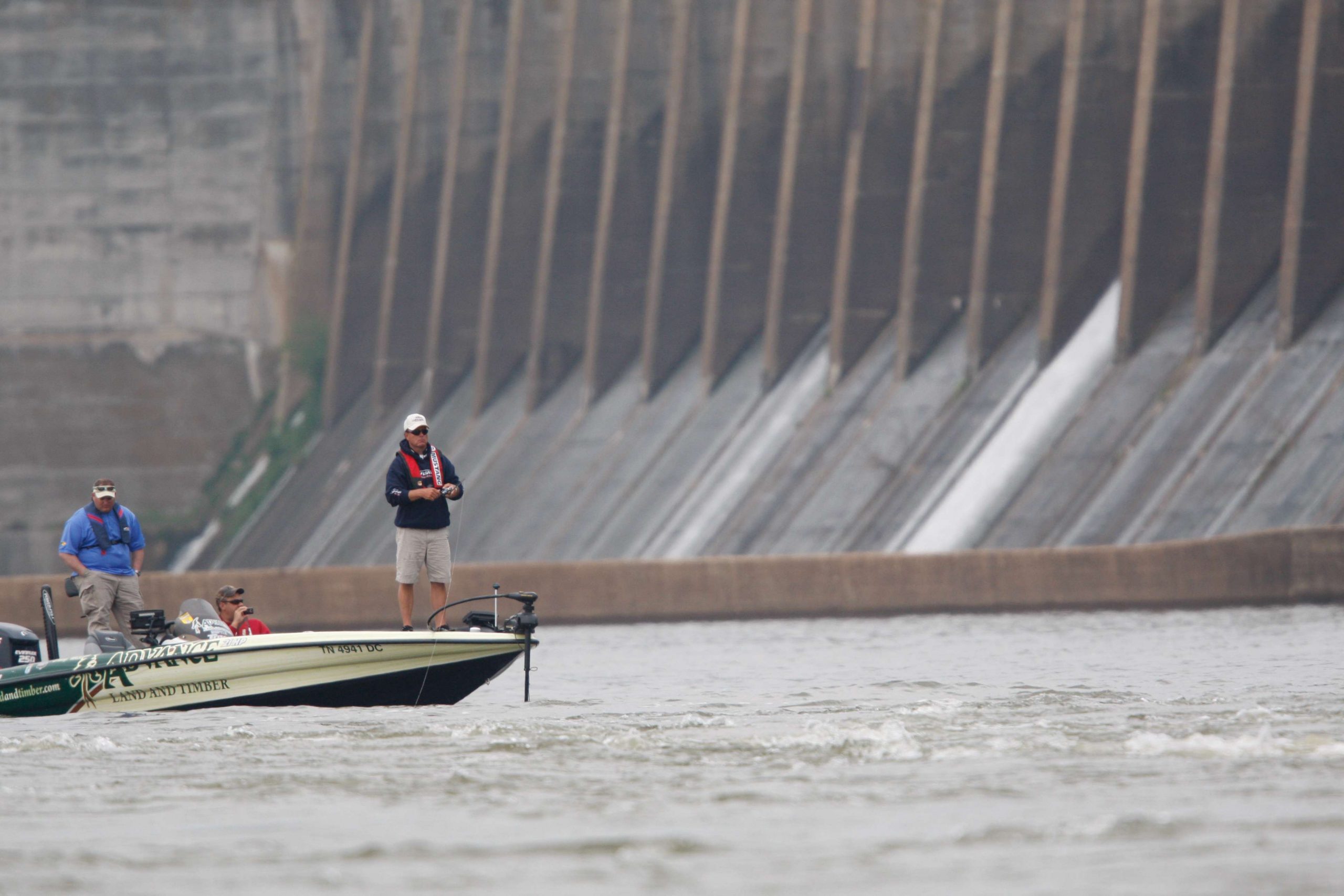
Officials at B.A.S.S. were surprised to learn of modifications released recently by the U.S. Army Corps of Engineers to its National Recreation Strategic Plan.
The Corps stated that declining recreation program budgets required changes in its recreation program and program delivery. Concerned that the Corps didn’t use a public process to make these changes, B.A.S.S. provided the following letter outlining observations and concerns based on a thorough review of the plan by B.A.S.S. National Conservation Director Noreen Clough as well as several state conservation directors from the B.A.S.S. Federation Nation.
The Corps’ Recreation Program is the nation’s largest provider of water-based recreation, with 4,254 recreation areas at 422 Corps lakes/rivers in 43 states and 370 million visits annually. These areas support many events each year for B.A.S.S. as well, including amateur tournaments in the B.A.S.S. Federation Nation presented by Yamaha and Skeeter and professional-level events in the Bass Pro Shops Bassmaster Opens and Bassmaster Elite Series.
The letter was submitted to Mary Coulombe on July 27, 2011. It follows in its entirety below.
Mary J. Coulombe
Chief, Natural Resources Management
U.S.Army Corps of EngineersMs. Coulombe:
Your May 27, 2011, public release notice of the Corps of Engineers’ National Recreation Strategic Plan was forwarded to me in June by the American Sportfishing Association. B.A.S.S., the premier nationwide tournament fishing organization comprised of more than 500,000 members, would like to provide you with comments and concerns.
B.A.S.S. state Federation Nation (BFN) club tournaments and the professional Elite and Open series tournaments frequently occur at Corps recreation areas, on reservoirs, lakes and rivers throughout the United States. We are somewhat surprised that we weren’t part of the Corps’ notification list. Please add us to your list of stakeholders for the future, using my contact information. We are optimistic that your intention to use field-focused webinars in the future will provide at least one avenue for our 47 BFN State Conservation Directors to interact and provide you with stakeholder opinions, as well as partnership opportunities.
We are also somewhat surprised that, since Corps of Engineers facilities accommodate more than 370 million visits annually as the largest federal provider of outdoor recreation, there wasn’t a more public process involved in the transformation and repositioning of your recreation program. Nevertheless, we offer the following thoughts, comments and concerns.
We appreciate the need for many federal agencies to realign their programs with current declining appropriations. However, we hope the Corps will continue to recognize sportfishing, comprising 25% of visits, as a key recreational activity on your waters, giving careful consideration when making difficult choices. In that regard, we find statements such as “flexibility, options, environmentally sustainable behaviors, and preserving some level of public access to water resources,” to be unnecessarily vague. Beyond that, there is little that spells out what actual impacts declining budgets are going to have other than the statement that it will require changes in the recreation program and the way the program is delivered. Nor are there ways to measure whether or not the strategy is going to be successful. Having measurable goals, such as sustaining a certain level of pubic use, appears to be necessary. It would also seem essential that there are well-structured guidelines for decision-making at all levels for decisions having significant impact on the Corps’ ability to provide access to quality water-based recreation. Corps services that would be continued under any funding scenario should be identified.
On the other hand, we find statements such as “increase use of partnerships as a means to sustain the levels of public service; increase use of volunteers to assist in operationalactivities and stewardship at recreation areas; and updating policies and regulations related to shoreline management, leases, partnerships,” and more, to be very encouraging.
B.A.S.S. through its BFN Conservation and Youth programs has a long history of giving back to the fisheries and aquatic resources we enjoy, making conservation an integral part of our mission. Our members are skilled in many ways beyond our catch-and-release ethic, from building facilities to restoring declining habitats to helping prevent and control aquatic invasive species. We would encourage each District and each particular Corps facility to be proactive in working closely with B.A.S.S. anglers in their community, facilitating new partnerships and nurturing existing ones. Don’t wait for B.A.S.S. to contact you – contact us.
For example, B.A.S.S. is actively involved in the National Fish Habitat Action Plan (NFHAP), and on the Board of the NFHAP National Reservoir Fisheries Partnership. Several of our state BFN’s are in the process of forming “Friends of Reservoir” (FOR) partnerships. Specifically, the New Mexico BFN is hoping to formalize their FOR relationship so they can work more successfully in finding funding and opportunities to work on habitat improvements at Elephant Butte in southern N.M.
In mentioning Elephant Butte, it is useful to point out that it might be appropriate for the Corps to consider using this model and the South Dakota model as reasonable national alternatives to the Corps’ administering the recreation program. Although I am not suggesting I know the details, I do know that in these cases the state parks and/or fish and wildlife agencies manage land, fish and wildlife and recreational resources and the Corps fulfills its obligations for operating a project for flood control, power generation, etc. It is unclear if the strategy will consider this.
Perhaps it is the existence of these different management schemes that gives rise to concern about recreation fee structures. We are concerned that any increase in fees remain at a specific recreation area, and not subsumed into the general fund. We would expect any fee increase at a specific reservoir, or throughout the system, to translate into well-maintained facilities such as boat access, parking areas, and creation of facilities such as aquatic nuisance species inspection and cleaning stations, as well as improvement in fisheries and aquatic habitat management and supporting research. If there is no other alternative to raising fees then we would recommend going to an annual fee system similar to the ones used by the National Park Service and U.S. Fish and Wildlife Service National Wildlife Refuge System.
At reservoirs where the Corps has a mitigation responsibility and uses fish raised by the U.S. Fish and Wildlife Service’s (FWS) National Fish Hatchery System to meet that commitment, the Corps has an overriding responsibility and obligation to provide the FWS reimbursement for those services.
It is unclear throughout discussions about public behavior, sustainable behaviors, etc., what is being targeted. Anglers, especially those who are experienced long-term anglers such as our B.A.S.S. members, are well aware of the need for clean water, healthy habitats and abundant fisheries. We would be and should be valuable advocates for the Corps in getting the message of fisheries resource conservation out to the general recreational public. We would encourage the Corps to work with angling groups and others to develop and promote aquatic resource conservation measures that are both beneficial to the resource and achievable.
The Corps should support the ongoing efforts of the myriad of agencies and organizations that are effectively finding ways of addressing aquatic invasive species, rather than considering it a diversion of recreation staff time for “non-recreation functions.” While we acknowledge that water-based recreation plays a major role in the spread of invasives, the Corps must proactively recruit water-based recreationist, and especially boating anglers to become part of the solution, not part of the problem. For example, in some states, B.A.S.S. members have constructed high-pressure wash-out stations or identified and mapped nearby car washes to enable anglers to wash boats and tow vehicles upon leaving a water body. Many B.A.S.S. clubs have developed and published standard operating procedures for their members to use when leaving a water body. Others work as volunteers at boat inspection stations.
We note that many of the changes in the Corps Recreation Program would benefit from increased communication with stakeholders and the development of solid partnerships at all levels. We are pleased that a key example of change is “increase use of partnerships as a means to sustain the levels of public service.” The Corps’ role today has evolved, and we would encourage that evolution to include an enhanced perception of the importance it plays in a new environment of synergy. Heightened public environmental awareness given recent catastrophic events such as Katrina and this spring’s flooding along the Mississippi and elsewhere only highlight the need for Corps public involvement at levels previously unknown.
We would encourage you then, when you “expand training, development, and succession planning for the workforce” you ensure there is a partnership piece — one that at a minimum meets your goal to “increase use of volunteers to assist in operational activities and stewardship;” one that also includes extensive public outreach, especially when policy changes like these are being proposed.
I look forward to working with you throughout the coming months as you begin implementing these changes. We look forward to being part of the solution.
Sincerely,
Noreen K. Clough
National Conservation Director
B.A.S.S. LLC

